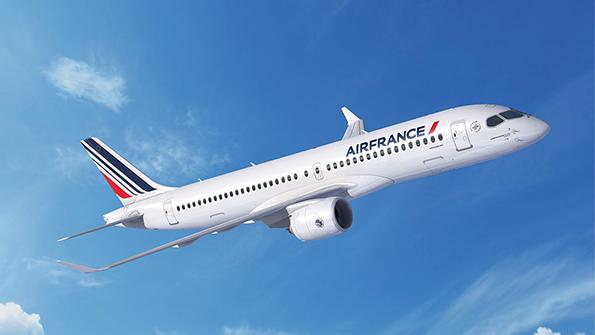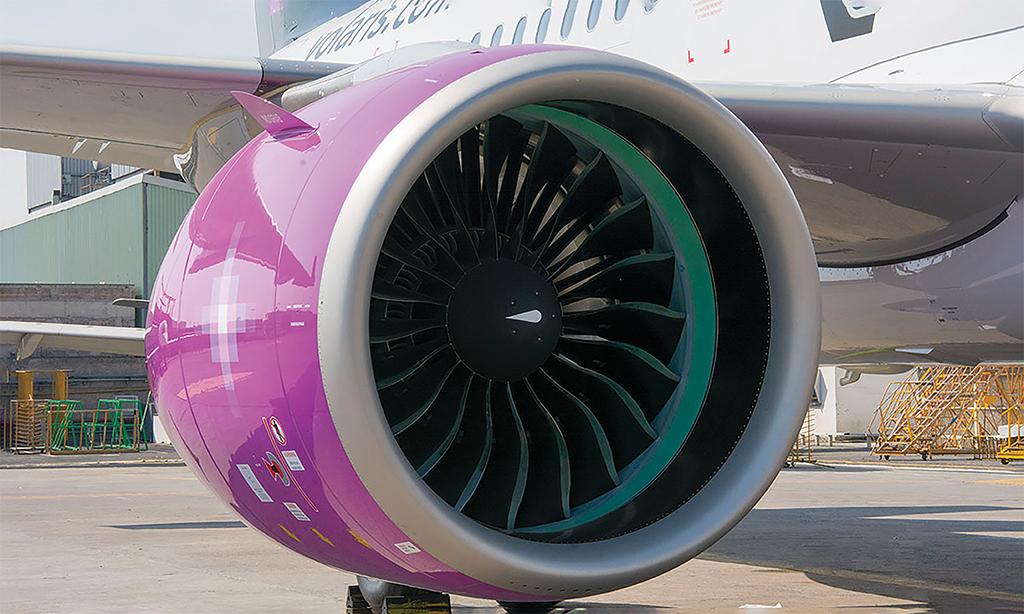Pratt & Whitney Positions Itself For Single-Aisle Recovery | プラット&ホイットニー社、ナローボディ機マーケット回復の中心に

プラット&ホイットニー社は、ギアードターボファンエンジンの大量受注を受け、改修作業の多くも大詰めを迎えている。これを受けて、コロナ危機後に航空機マーケットの復活に主導的な役割を果たすとされる、ナローボディ機の需要回復を有効活用するための動きに入った。
同社の全体的なMRO収益は景気後退の影響を特に大きく受けているが、この需要低迷期を活かして同社ではPW1000Gファミリーの改良を進めた。最高商務責任者(CCO)の Rick Deurloo氏は「この時間をPW1000Gの構成をアップグレードするために用いることができた。2020年の当社のMRO収益には大きな懸念があったため、この危機を脱するための手段という位置付けだ」と述べた。
旅行需要の回復は、ナローボディ機による短中距離路線が主導するという他の多くの予想と同様、同氏は「世界中の多くの航空会社やメーカーと同様、今年の第2四半期には旅行需要の回復が始まることを、用心深く楽観視している。これは一瞬回復してすぐに消失するようなものではなく、ある程度回復した上で、そこから維持・拡大できるものになると考えている」と語る。
同社が持つ確信の一部は、Deurloo氏が「適切なサイズの機体」と呼ぶ、PW1100G搭載のエアバスA320neo、PW1500G搭載のA220、PW1700G/1900G搭載のエンブラエルE-Jet E2ファミリーにおける、同社の立ち位置からもたらされるものだ。
同氏は、「一般的には、おそらく3つのマーケットが復活すると考えられている。最初に回復するのはレジャー目的の格安路線で、その旅客数、そして国内線であることからナローボディ機が中心になる。ここが我々の本命で、すでにギアードターボファン(GTF)搭載機の需要が回復するのを見てきた。2020年末にはGTFの稼働状況はコロナ危機以前の水準のおよそ95%まで回復していた。GTF搭載機は最も遅れて不況に陥ったが、そこから最初に復活する機材でもある」と説明した。
同社最大のGTFプログラムであるPW1100Gについて、同社はエンジンの信頼性に影響を与えていた2つのコンポーネント(低圧タービンおよびアクセサリーギアボックス)の改修を、ほぼ全てのエンジンに対して完了した。90%以上のエンジンには3段目の材質が変更された改良型の低圧タービンが搭載され、98%以上のエンジンにおいてアクセサリーギアボックスが交換された。
特に重要度が高かった作業としては、インドのIndiGoおよびGoAir社向けの改修が挙げられる。「我々は多くの作業を迅速に済ませ、2020年中にフリート全体の改修を完了することができた。これは我々にとって重要なマイルストーンになる」とDeurloo氏は話す。
そんな中、同社では引き続きPW1500G(A220に搭載)の問題解決を進めている。これは、スイス国際航空およびエアバルティック機で発生した機械トラブルにより、1段目の低圧コンプレッサー内に統合されたブレードローターが破損し、飛行中のエンジン停止につながった問題だ。2020年初頭、FAAはプラット&ホイットニー社が開発したソフトウェアアップグレード(可変インレットガイドベーンの再調整により問題を改善)の適用を早急に義務化した。
しかし、同社では長期的な解決策を開発すべく、需要低迷期の時間を用いて低圧タービン故障の根本的な原因分析を進めている。「我々は適切な形(実験や飛行試験)でプログラムを進める必要があり、これは追って実施されることになる」とDeurloo氏は述べた。
これらの問題にも関わらず、同社はエアバス社に対してA320neoおよびA220向けエンジンの納入を進めており、不況の中で貴重な収益を生み出している。A320neoではCFM社のLeap 1Aと競合するが、Deurloo氏は2016年1月にルフトハンザ航空向けにGTFを搭載したA320neoの初号機が納入されて以降、着実に納入数を増やしていることに触れ、「現在48%程度のシェアを獲得しており、我々はこれにとても満足している。それが最も重要なことだ」と話し、「究極的には、売上と収益を生み出すためには顧客が必要だ。だからこれが最も重要な指標だと考えている」と付け加えた。

受注残で見ると、プラット&ホイットニー社はCFM社と比較して約43%のシェアを獲得している。とはいえ、同社は最近見直された一連の受注活動によって逆転する可能性もあると考えており、楽観視している。その一例は、フロンティア航空による大規模な契約変更で、発注したA320neoの搭載エンジンをLeapから変更した。Deurloo氏は「やるべきことはたくさんあり、それをさらに増やすチャンスもあると考えている。今のところキャンセルはなく、他社と同様、コロナ危機に伴う多くの納入延期はあるものの、質の高い、幅広い顧客層から受注を得られていると感じている」と述べた。
同社の受注の多くは、コロナ禍の中でも比較的安定した運航と発注を続けているといえる、IndiGo Partnersグループ内の航空会社に関連している。2月初頭、プラット&ホイットニー社はメキシコを拠点とするLCCで IndiGo Partnersの一員でもあるVolarisが、80機のA320neoを追加発注した際にGTFを選択し、エンジン整備契約も同時に締結した。Volarisによる従来からの発注分である44機のA320neoに加え、この最新の契約分で合計124機のGTF搭載機を発注したことになる。
Volarisとの契約は、1月下旬にコロラド州を拠点とする別のIndiGo系航空会社であるフロンティア航空が、134機のエアバス機にGTFエンジンを選択したという発表に続くものだ。その内訳は、49機のA320neo、67機のA321neo、18機のA321XLRとなっており、最初の引き渡しは2022年を予定している。「フロンティア航空は、当初は競合のエンジンを選択していたという点において独特の存在だ。(そこから変更したことは)GTFアーキテクチャに対する業界の信頼を裏付けるもので、非常に良い兆候だと感じている」とDeurloo氏は語る。
さらに、チリのJetSmartとハンガリーのWizz Air、そこにVolarisとフロンティア航空の契約を合計すると、 IndiGo Partners系の4社が619機のGTF搭載機を発注したことになる。
Deurloo氏は「当社はコロナ禍の中でフロンティア航空およびVolarisとの契約を完了させたが、それは本当に長い道のりだった。そして、今では非常に楽観的な気持ちで臨んでいる。また、これらの契約は今年の第2四半期から業界が回復していく兆しとも捉えている。今こそこういった大規模契約に注目するべきで、これらは航空会社が再び成長していく原動力になるだろう。機材の多くは2023年以降にデリバリーされることから、コロナ危機からの復活を長期的に支えていく役割を担うことになると考えている」と話した。
最近の慌ただしい発表の中には、PW1500Gの発注も含まれている。プラット&ホイットニー社は2月1日、エールフランス・KLMグループとの長年にわたる交渉がまとまり、60機のA220-300向けに120基のGTFエンジンの採用が決まったことを明らかにした。エンジン整備についても、MROを担当するAFI KLM E&M社と長期的な包括契約が結ばれ、最初の機体は2021年9月にデリバリーされる予定だ。
エールフランスによるA220の導入は、プラット&ホイットニー社の拡大する民間機オペレーターのポートフォリオにとって重要なマイルストーンになると、Deurloo氏は話す。「我々はエールフランスに対して何十年も新製品を提供してこなかった。A320neoシリーズが大規模プログラムとして注目を集めることは理解できるが、A220やエンブラエルE-Jet E2(PW1700G/1900Gを搭載)もまた、GTFアーキテクチャが様々な機種に適応できることを示す好例だ」と同氏は説明する。
KLMの子会社であるKLM Cityhopperは2月23日、同社初のエンブラエルE195-E2のデリバリーを受け、これについてもDeurloo氏は「数十年ぶりに新製品を納入した航空会社の一例だ」と述べた。同社は最近、これまで発注していた21機のE195-E2に加え、4機を追加発注した。
Aviation Week Intelligence Network (AWIN) のメンバーシップにご登録いただくと、開発プログラムやフリートの情報、会社や連絡先データベースへのアクセスが可能になり、新たなビジネスの発見やマーケット動向を把握することができます。貴社向けにカスタマイズされた製品デモをリクエスト。
Bolstered by a spate of geared turbofan orders and near to completing a series of key retrofits, Pratt & Whitney says it is poised to take advantage of the single-aisle airliner rebound that is widely forecast to lead the post-COVID-19 pandemic aviation market recovery.
Although the engine-maker’s overall maintenance, repair and overhaul (MRO) revenues have been particularly affected by the downturn, the company has made the most of slack demand to implement specific improvements to the PW1000G family. “We’ve been able to really take this time to upgrade the configuration of that engine,” says Rick Deurloo, Pratt & Whitney chief commercial officer. “Our MRO output was really a big focus in 2020, and so it’s positioned us as we exit this crisis.”
In line with other forecasts that predict passenger recovery will be led by the single-aisle, short-to-medium-haul passenger market, Deurloo says: “Like most airlines and OEMs around the world, we’re cautiously optimistic that in the second half of this year we’ll start to see that traffic come back and stick—not just come back and then go away again. This summer we think the traffic will come back to some degree, and we’ll be able to hold it and grow it from there.”
Part of the company’s belief is based on its position on what Deurloo describes as “the right-size airplane” whether that’s the PW1100G-powered Airbus A320neo, PW1500G-powered A220 or PW1700G/1900G-powered Embraer E-Jet E2 family.
“The general belief is there are three markets that’ll probably come back,” Deurloo says. “The fastest is likely to be the low-cost market because of leisure, the narrowbody because of the size and domestic. That’s our sweet spot, and we’ve seen the [geared turbofan (GTF)] come back first. At the end of 2020, GTF utilization was back to roughly 95% of pre-COVID levels. GTF-powered aircraft were amongst the last airplanes to go down, but if it went down then, it was also the first airplane to come back up.”
For its biggest GTF program, the PW1100G, Pratt has now almost completed a fleet-wide retrofit of two components that have plagued the engine’s reliability: the low-pressure turbine (LPT) and the accessory gearbox. More than 90% of the engines have now been reconfigured with the revised LPT, which incorporates a material change in the third stage, while over 98% of the PW1100G accessory gearboxes have been replaced.
A high-profile priority included completing retrofits for the A320neos at Indian airlines IndiGo and GoAir. “We were able to do a lot of quick turns on their LPT and get that fleet completely retrofitted in 2020, which is an important milestone for us,” Deurloo says.
Pratt meanwhile continues to develop a fix for a problem on the PW1500G version powering the A220. Mechanical issues leading to uncontained failures were unearthed on the low-pressure compressor Stage 1 integrally bladed rotor following a series of inflight shutdowns at Swiss International Airlines and AirBaltic. In early 2020, the FAA fast-tracked a mandatory software upgrade developed by Pratt to mitigate the issue by rescheduling the variable inlet guide vanes.
For the longer term, however, Pratt has also used the downturn to perform a full root-cause analysis of the LPT failure, Deurloo says. “We have to do the program right—we will have to go out and flight-test—so that’s coming at a later time.”
Despite these issues, Pratt has maintained deliveries to Airbus of compliant engines for both the A320neo and A220 programs, which is providing valuable revenue during a difficult period. On the A320neo, for which it competes against CFM’s Leap 1A, “we feel really good that we’re right around 48% delivery share—that’s most important to us,” Deurloo says, referring to cumulative deliveries since the handover of the initial GTF-powered A320neo to Lufthansa in January 2016. “We think that’s an important metric because, ultimately, in order to generate revenue and earnings, we have to have customers,” he adds.

In terms of the orderbook, Pratt has around a 43% share compared to CFM. However, the company is optimistic this share could change after a recent series of renewed order activity—including a significant “flip” deal with Frontier Airlines, which previously operated only Leap-powered A320neos. “There’s a lot of work to do, and we think there’s an opportunity to drive that higher,” Deurloo says. “We have not seen any cancellations—like everybody else, we’ve seen a lot of deferrals in time during this crisis—but we like our backlog in the sense that we have a good, diverse, background of customers.”
Much of Pratt’s order base is associated with airlines within the IndiGo Partners group, which appear to be maintaining their operational health and order backlogs despite the pandemic. In early February, Pratt announced that Volaris, the Mexico-based low-cost carrier and IndiGo Partners affiliate, selected it to power an additional 80 A320neo-family aircraft along with provision of an engine maintenance agreement. On top of a previous Volaris order for 44 A320neos, the latest deal brings the airline’s total commitment to 124 GTF-powered aircraft.
The Volaris announcement came on the heels of news in late January that another IndiGo partner, Colorado-based Frontier, had selected the GTF engines to power 134 Airbus aircraft—including 49 A320neos, 67 A321neos and 18 A321XLRs. The first of these aircraft are currently scheduled for delivery in 2022. “Frontier was unique in the sense that they were using my competitor’s engine, which was the engine of choice at that time. So I think it really bodes well and shows the industry’s confidence in the GTF architecture,” Deurloo says.
Together with JetSmart in Chile and Wizz Air in Hungary, the Volaris and Frontier deals mean the four IndiGo Partners airlines have committed to 619 GTF-powered aircraft.
“We completed both the Frontier and the Volaris definitive agreements during COVID, and it was a long process . . . and we feel very optimistic,” Deurloo says. “We also see these as signs that we will be starting to emerge from this crisis in the second half of this year, and now’s the time to highlight some of these big contracts. . . . I would also say it positions these airlines for growth. The majority of those airplanes are [for delivery in] 2023 and beyond, so it really sets them up in the long term as they come out of this crisis as well.”
PW1500G orders have also been part of the recent flurry of announcements. Pratt revealed on Feb. 1 that the Air France-KLM Group had finalized a long-standing deal for more than 120 GTF engines to power a fleet of 60 A220-300 aircraft. To be supported by a long-term comprehensive service agreement with engine maintenance planned to be carried out by MRO-provider AFI KLM E&M, the first aircraft is scheduled to be delivered in September 2021.
The introduction of the A220 with Air France will mark a significant milestone for Pratt’s broadening commercial operator portfolio, Deurloo says. “We have not put a new product into Air France for decades. I know the Neo gets a lot of the attention as a big volume-based program, but the A220 and the Embraer E-Jet E2 [for which Pratt provides the PW1700G/PW1900G] are also great examples of where we’ve been able to take that GTF architecture and leverage it in the different platforms.”
KLM subsidiary KLM Cityhopper, which took delivery of its first Embraer 195-E2 on Feb. 23, “is another example of an airline that we hadn’t delivered a new product to in decades,” Deurloo says. The operator recently ordered four additional 195-E2s to add to its existing order of 21.